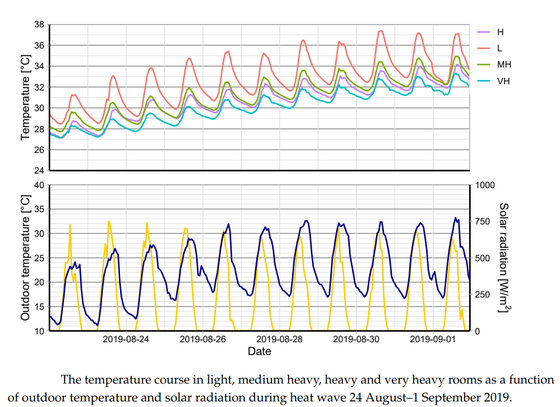25.10.2021
The effect of the thermal mass of the building envelope on summer overheating of dwellings in a temperate climate
The main objective of this paper is to demonstrate the effectiveness of increasing the thermal capacity of a residential building by using traditional building materials to reduce the risk of its excessive overheating during intense heat waves in a temperate climate. An additional objective is to show that the use of this single passive measure significantly reduces the risk of overheating in daytime rooms, but also, though to a much lesser extent, in bedrooms. Increasing the thermal mass of the room from light to a medium heavy reduced the average maximum daily temperature by 2.2 K during the first heat wave and by 2.6 K during the other two heat waves. The use of very heavy construction further reduced the average maximum temperature for the heat waves analyzed by 1.4 K, 1.2 K and 1.7 K, respectively, giving a total possible reduction in maximum daily temperatures in the range of 3.6 °C, 3.8 °C and 4.3 °C. A discussion of the influence of occupant behavior on the use of night ventilation and external blinds was carried out, finding a significant effect on the effectiveness of the use of both methods. The results of the study suggest that in temperate European countries, preserving residential construction methods with heavy envelopes and partitions could significantly reduce the risk of overheating in residential buildings over the next few decades, without the need for night ventilation or external blinds, whose effectiveness is highly dependent on individual occupant behavior
More information can be found on the Educational Platform.





